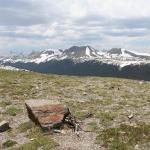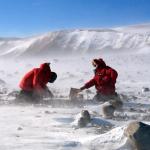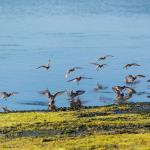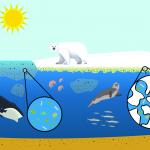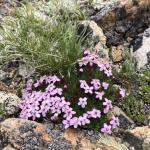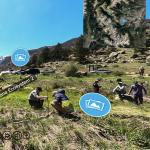Lesson Plans & Activities
Exploring the Arctic
This is the first activity of a three-part curriculum about Arctic climate; the activities may be used independently or in sequence.
This activity introduces students to the Arctic and Arctic climate. Through a virtual exploration of the geography of the Arctic students become familiar with the region. They are then introduced to meteorological parameters that Arctic research teams use.Lesson
Polar Science
High School
University/College
Do you really want to visit the Arctic?
This is the second activity of a three-part curriculum about Arctic climate; the activities may be used independently or in sequence.
This jigsaw activity introduces students with Arctic weather data using a role-playing activity that has students read and interpret graphs while considering the optimal time to plan a research mission to the Arctic.Lesson
Polar Science
High School
University/College
Sherlock NOx: The Mystery of Unnatural Pollution in Natural Places
The four DISCOVER-AQ modules can be completed independently, sequentially, or extended into a larger unit of study.
Students take virtual field trips to explore air quality research sites and investigate the causes, effects, and solutions to nitrogen deposition in Rocky Mountain National Park during this module.
Lesson
Middle School

Population Estimates: Bringing Math and Science Together
Project EXTREMES lessons were written to be stand alone lessons, but this activity may be used prior to a field study to provide students with practice in estimating or used in a unit on ecosystems.
During this activity students will learn how to estimate population size using two techniques, density extrapolation and the mark-recapture method.
Lesson
Middle School

The Future of Forests
This storyline unit consists of 9 lessons, each tied to NGSS life science standards
In this middle school unit supported by NASA, students engage with online interactives, authentic datasets, and citizen science protocols to construct models and explanations for the unit driving question, "How do landscapes recover after a wildfire?"Unit
Middle School
High School
A Changing Arctic Ecosystem
This storyline unit consists of 8 lessons, each tied to NGSS life science standards
The Arctic is warming more rapidly than anywhere else on Earth. One consequence of a warming Arctic is a dramatic decline in sea ice, an important habitat for many Arctic plants and animals. In this unit students will engage with 360° virtual reality tours, hands-on labs, and authentic Arctic datasets as they gather evidence to construct explanatory models for the unit driving question, "How might the decline in sea ice affect Arctic organisms large and small?"Unit
Polar Science
Middle School
High School
Data Puzzle: The Tipping Point
This data puzzle is a stand-alone lesson that is part of a larger collection of data puzzles.
Plants like moss campion are uniquely adapted to the cold, dry climate characteristic of the tundra biome...but temperatures are on the rise. In this Data Puzzle, students analyze temperature and reproduction data to construct explanatory models for the following question "How is moss campion reproduction affected by temperature?"Data Puzzle
Middle School
High School

Ecosystems of Rocky Mountain National Park
This virtual reality tour is part of a larger lesson focused on ecosystems.
Students explore biotic and abiotic interactions in Rocky Mountain National Park ecosystems in this virtual reality tour.VR Experience
Middle School
